Every person who has teed up a ball has experienced the complex relationship between player and game inherent to golf. We alternately love and hate our time on the course. Just when we think we’ve achieved mastery, the rug is yanked out from under our feet. In our loftier moments, the game seems to embody all of the mysteries of life itself. At lower moments, we side with late comic Robin Williams’ conclusion that golf is the dumbest activity ever invented by man. Around and around we go.
China has had a similarly complicated relationship with the game of golf that stretches back over centuries. The country has wrestled with this relationship in much the same way that it has wrestled with its own cultural complexities as Eastern traditionalism, modern Communism, and Western capitalism vie for the hearts and minds of the Chinese people. Quite the ecosystem for an Australian design firm to enter, but with their renovation of Yangtze Dunes, that is just what Ogilvy, Clayton, Cocking & Mead have done. By employing their thoughtful and soulful approach, it just might be that the Aussies have ushered in a new phase of golf in China.
Origin and evolution
The game that we know today as golf developed in 15th century Scotland and had firmly taken hold by the time of the first Open Championship at Prestwick in 1860. What inspired these early players to take to the links? With stick and ball games documented as far back as the Roman Empire, theories abound, but the prevalent perspective is that golf was derived from the Dutch game of colf when traders exposed the Scots to their pastime. Another, albeit smaller, contingent of historians believes that golf can be traced back to China, and the courtly game of chuiwan. Chuiwan translates as “to hit a ball” and resembled what we now know as pitch-and-putt. The Chinese royalty were hitting balls at court all the way back in the 12th century and written rules were published in 1282. Mission Hills expanded on this history and created an illustrated video.
Regardless of which origin story one subscribes to, it seems clear that somewhere in human DNA is an affinity for “stick and ball” games. In truth, origins don’t even matter relative to the powerful force of evolution. One game morphed into another, a process that continues on today within golf around the world.
Golf in China then
Chuiwan had died out by the time of the Ming Dynasty, and the modern golf of Scottish heritage did not catch on in China until much later, in spite of ongoing trade with Europe and the West. By the time of World War II, only a handful of rudimentary courses existed, primarily meant to serve elites, and western diplomats and businessmen. Golf was certainly not a game for the masses. After the war, the Communist Party rose to power and Chairman Mao banned the sport in 1949 – an easy symbolic target of bourgeois excess, or as he called it, “a millionaires’ game.” This initial ban began China’s love-hate relationship with golf, the details of which are thoroughly covered in Dan Washburn’s book The Forbidden Game.
In 1979, Den Xiaoping visited the U.S. to meet with President Carter and other American leaders. His goal was to open China to foreign investment. Den was educated on the connections between golf and business, prompting him to welcome two important golf ambassadors – Arnold Palmer and Robert Trent Jones Jr.

The King, spreading the good word of golf - Photo Credit: Dick Fung AP
As he always had, The King connected to a wide audience and soon began work on his first course in the country. Robert Trent Jones Jr., who met the Chinese leader in Seattle, started a project of his own at Shanghai Country Club. Jones was quoted as telling his Chinese contact, “I need security for my men…and I need to move 300,000 cubic meters of earth to create the golf course.” Not exactly a minimalist tone to set. Other architects followed, and brought with them all of the most unfortunate aspects of golf architecture in the ‘80s and ‘90s. Evidence of the principles of accessibility and environmental sustainability were often missing from the designs.
By 2004, golf found itself back in the crosshairs of the Communist Party and new course construction was banned. In spite of the ban, 500 new courses were built by 2017, with developers sometimes engaging in shady land deals and calling the courses “sports parks” to skirt the ban. In retrospect, the American led boom in course development can hardly be considered to have been sensitive to the complexities of Chinese culture. Rather, the late 20th century golf development approach relocated to the east when the U.S. market cooled.
Golf in China now
NLE. Three letters that no architect ever wants to have associated with one of their golf courses. The best architects don’t just draw plans and cash checks. They pour their minds and hearts for years into the process of creating a physical work of art and engineering out of the sand and dirt. They agonize over tees, hazards, greens, contours and fine details in an attempt to challenge and delight the players who will ultimately experience those creations. Imagine yourself as a course designer, after that painstaking effort, seeing the course you built wiped away by a bulldozer like an eraser on a chalkboard. Your course no longer exists. What a shot to the gut that must be.
That shot is exactly what 111 of China’s 683 golf courses received in 2017 when President Xi Jinping shut them down as part of a broader effort to root out corruption. Among the courses closed was RTJ2’s Shanghai C.C., which was deemed to have been built too close to a reservoir. In spite of the closings, and the attendant ban on party members playing during work hours, the game of golf continues to slowly grow in popularity. Stars like Shanshan Feng have picked up Mr. Palmer’s mantle, exposing it to a wider audience.
This winding road of love and hate brings us at long last to Chongming, the world’s largest alluvial island, in the Yangtze River. Chongming is home to Lanhai International Golf Club, a 36-hole facility that now features the OCCM renovated Yangtze Dunes. The redesign has been highly acclaimed to date, in no small part because it is the first true links course in China. OCCM combined their Sandbelt sensibilities with their love of the classic links of the British Isles when reimagining the former Nicklaus course. They then went one step farther by seeking to understand the local landscape and culture instead of imposing a foreign style.
According to project lead Ashley Mead, the decision came naturally. “So we’re in China, on a giant sand bar in the middle of the mighty Yangtze River, just northeast of Shanghai, in the shadow of the mighty Yangtze River Bridge. This site was crying out for a course that embodied everything that makes links golf great fun, and we’re very pleased that Yangtze Dunes so strongly accentuates this place and culture.”
Although the OCCM team had the requisite sand needed to make a great links, the land did have problems to solve. “One of the biggest challenges with the site was the irrigation storage lake which was positioned in the middle of the course adjacent to the 3rd and 6th holes. It presented quite a challenge in that it looked manufactured, and the holes that played around it looked better suited to a resort course,” recounts Mead. “Other architects that had looked at the project had suggested a complete rerouting of the course away from the lake, which would have come at a considerable cost. Our design solution came from studying the nearby Dongtan Wetlands to look at how we could possibly turn the lake into more of a wetlands. The biggest key to our solution was to enlarge the lake to reach a nearby tributary of the Yangtze River so the land surrounding it had more of a peninsula feel. Quite often when you visit land near a coast the ground just beyond the dunes has pockets of low lying ground and wetlands – this became our inspiration.”
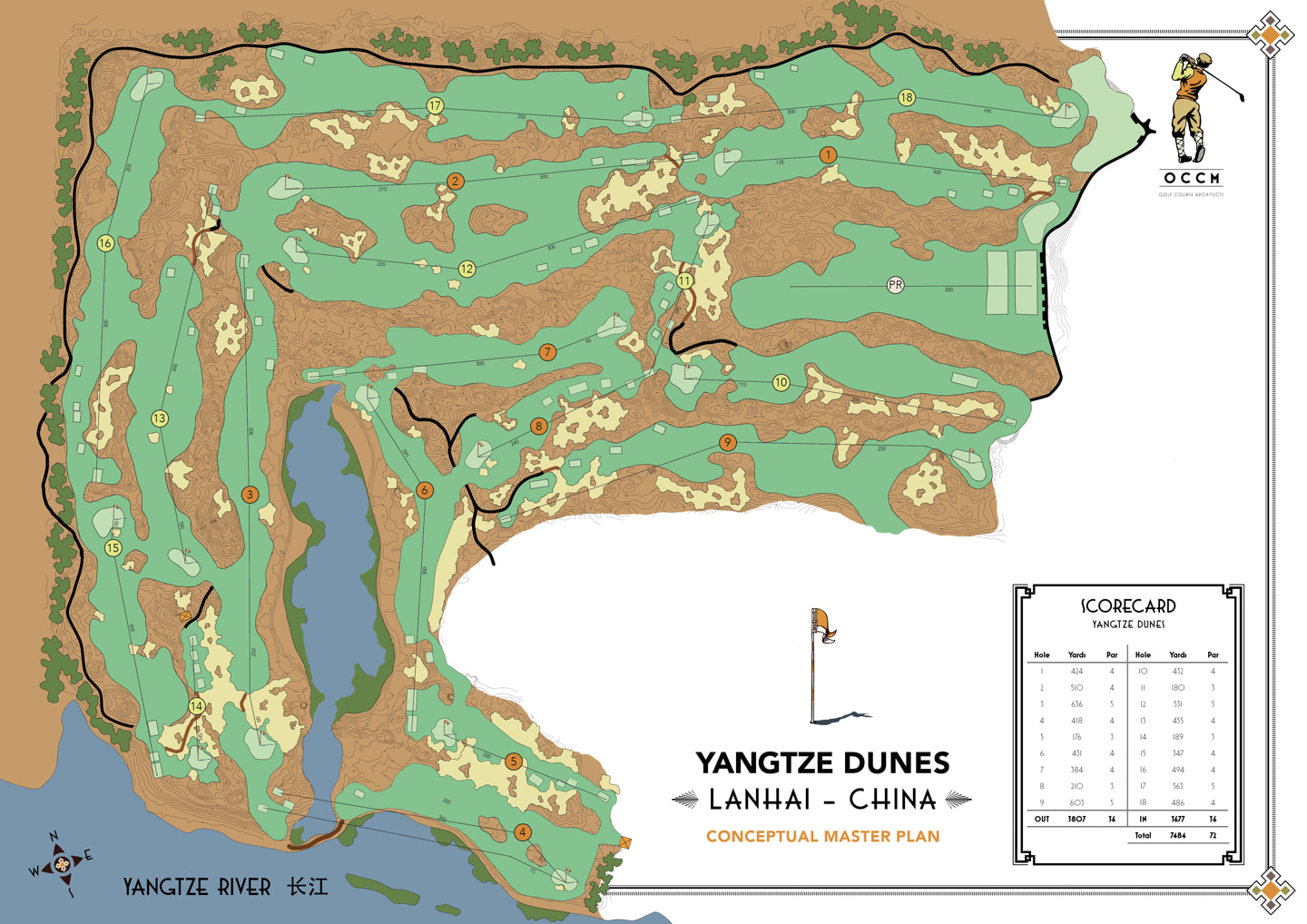
This is not the only instance of OCCM looking to local sources of inspiration, however. The intention was not for players to feel like they were on a links course in China, but rather a Chinese links course. An important distinction that required extra legwork on the part of Ashley and his colleagues. “In order to make the course feel older than it really was we traveled to many different locations around Shanghai to see what type of landscaping elements could be integrated into the design,” Ashley explains. “Suzhou was a great place we visited, which is an old village with canals as streets known as the Venice of China. It had many examples of pathways, old fences, bridges, Willow trees overhanging the lake – elements we added to the design. In addition to Suzhou, there were many local gardens, temples, factories and junkyards (in search of traditional pavers!) that we visited as part of our journey at Lanhai.”
The team also convinced management to remove the cart paths and make the course walking only. Where walking paths exist, they are made from those scavenged traditional pavers. A true links course indeed. As one final stroke of inspiration, OCCM brings players full circle with the putting course they created, appropriately named the Chuiwan course.
Friend of The Fried Egg Buck Wolter recently visited Lanhai and loved Yangtze Dunes. He was gracious enough to share his player’s impressions. Buck’s thoughts accompany the stunning photography of Gary Lisbon below (for more of Gary’s work, visit https://www.golfphotos.com.au/ and follow him on IG @garylisbongolf).
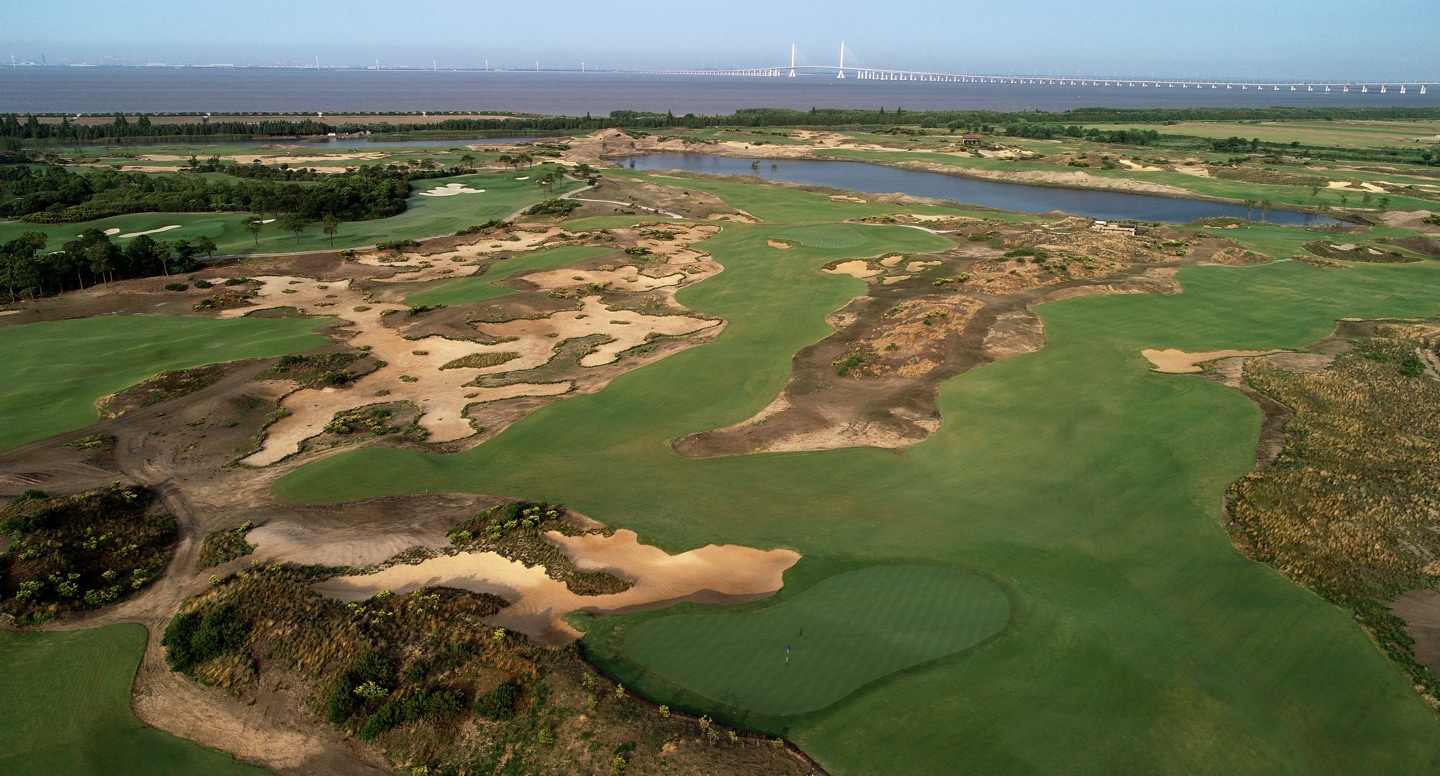
Outward half impressions
It didn’t take long for Buck to be impressed. “The course is very playable with ample, but not excessive fairway width and very little rough. It’s close enough to the ocean to feel like a real links. By the time I reached the elevated 4th tee, which provides 20 mile views including the bridge, I was all in.”
-

The left fairway bunker at the par-4 1st
-
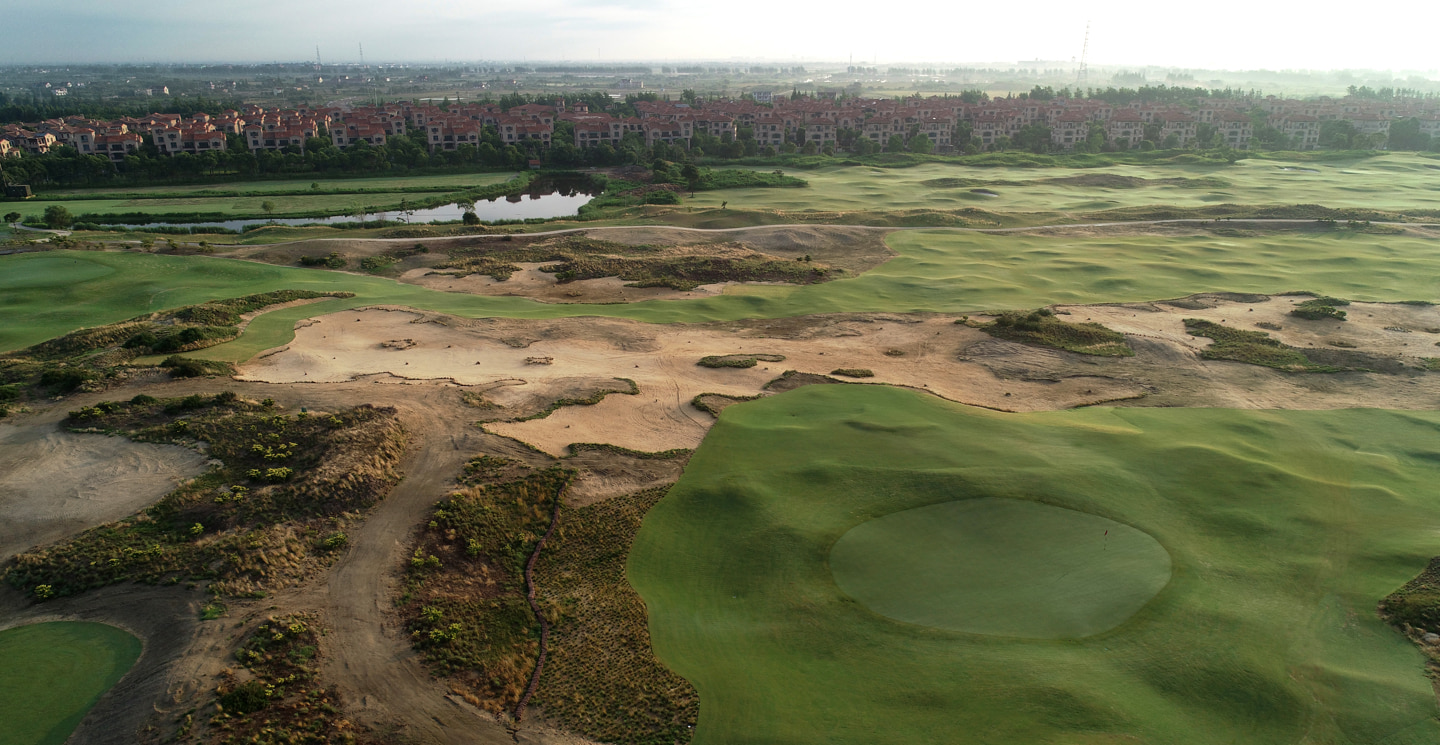
Above the green on the long par-4 2nd
-
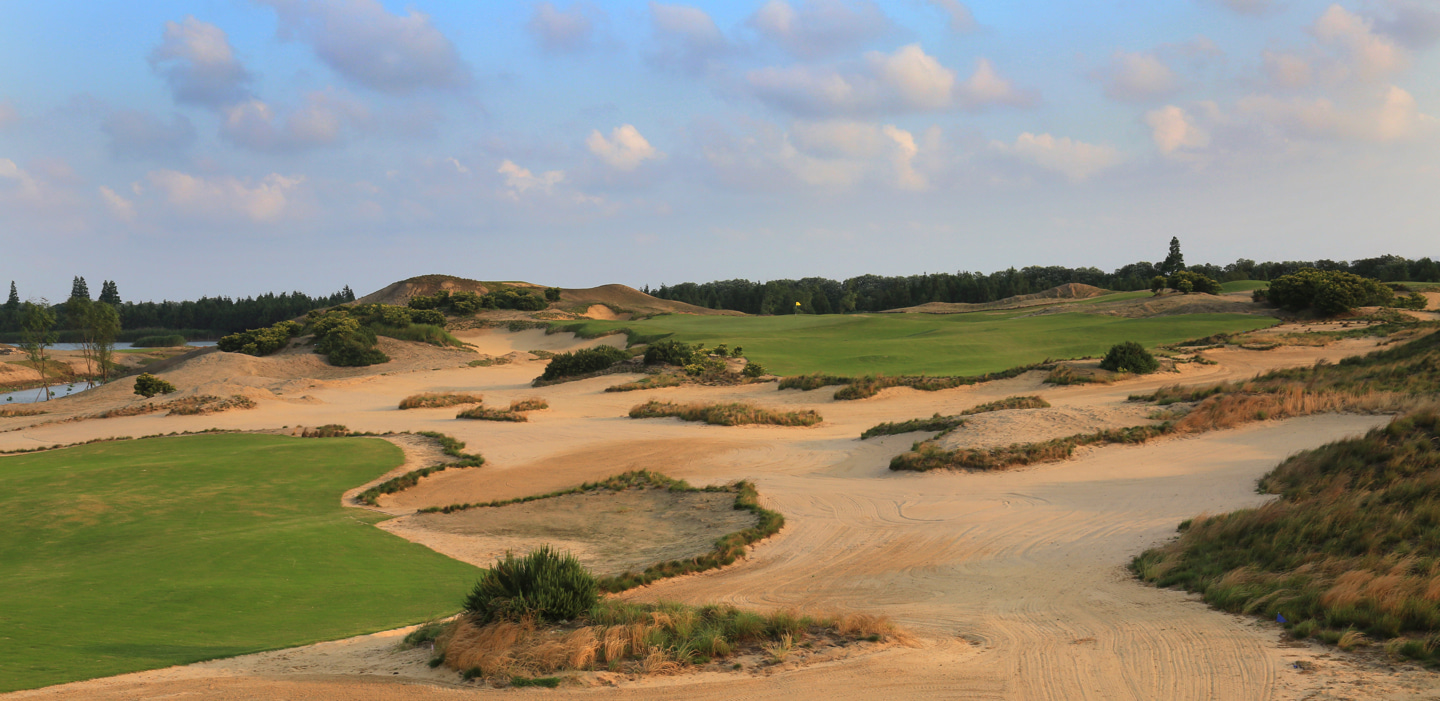
Approaching the green on the long par-5 3rd
-
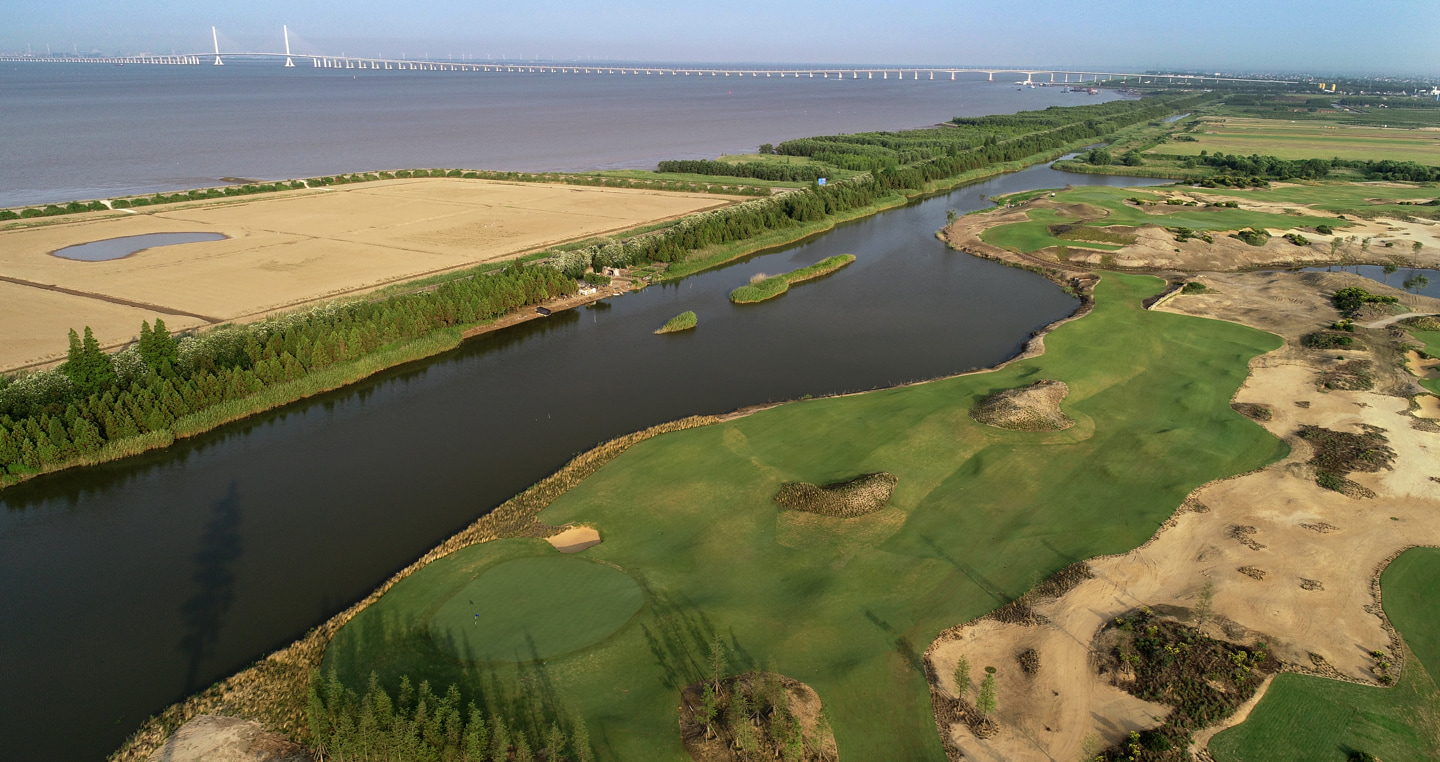
Above the par-4 4th
-

The tee shot on the par-3 5th
-
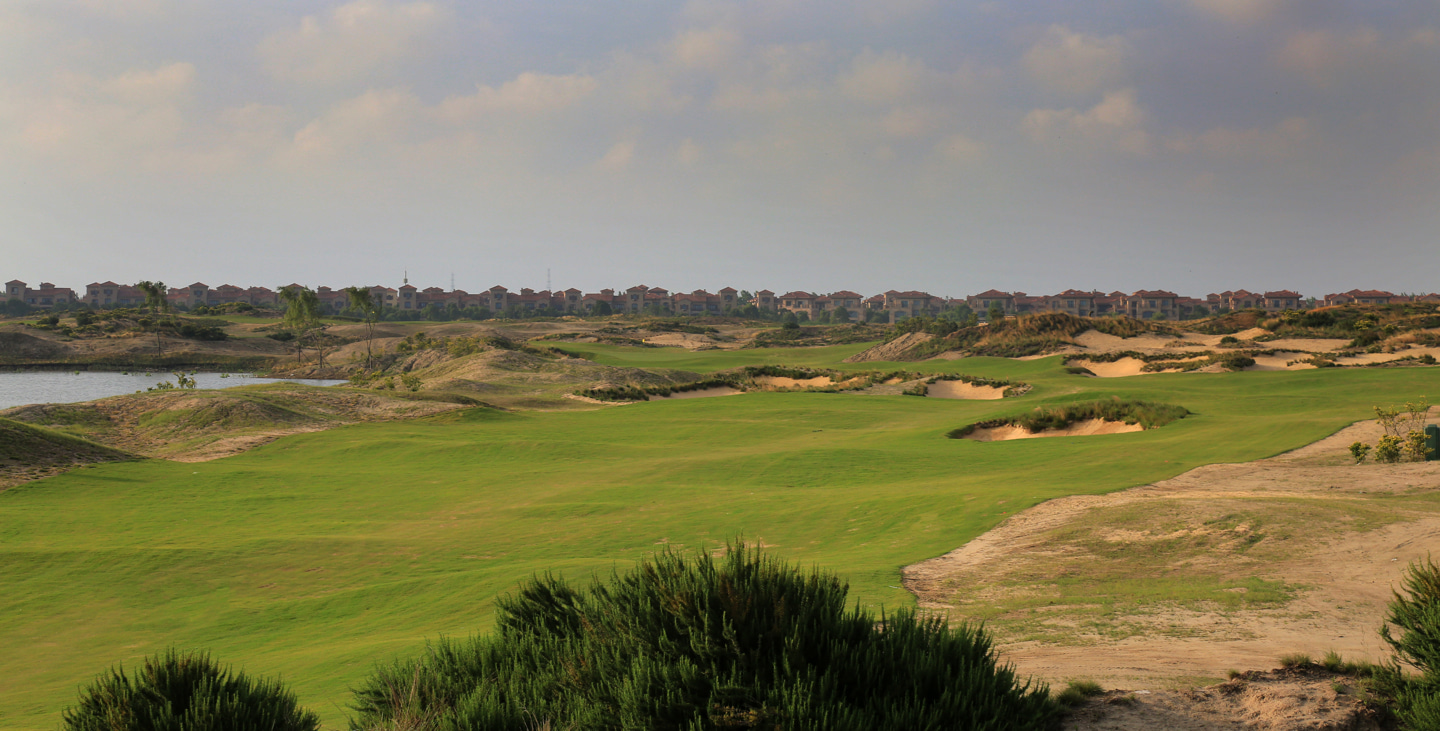
From the tee on the par-4 6th
-

Behind the green on the par-4 7th
-

Approaching the long par-3 8th
-

Above the approach to the par-5 9th
Inward half impressions
By the end of the round, Buck had a full appreciation for the design. “It’s a great routing for walking, with nice green-to-tee transitions. It has a solid set of par-3s, playing to varying lengths and directions. Some of the fairway contours are borderline overdone, but in general, the shaping is spectacular and natural. Bunkers fit into the landscape and are real hazards, although they can be navigated around.”
-

Short of the green at the par-4 10th
-

The green at the par-3 11th
-

Approaching from the left on the par-5 12th
-
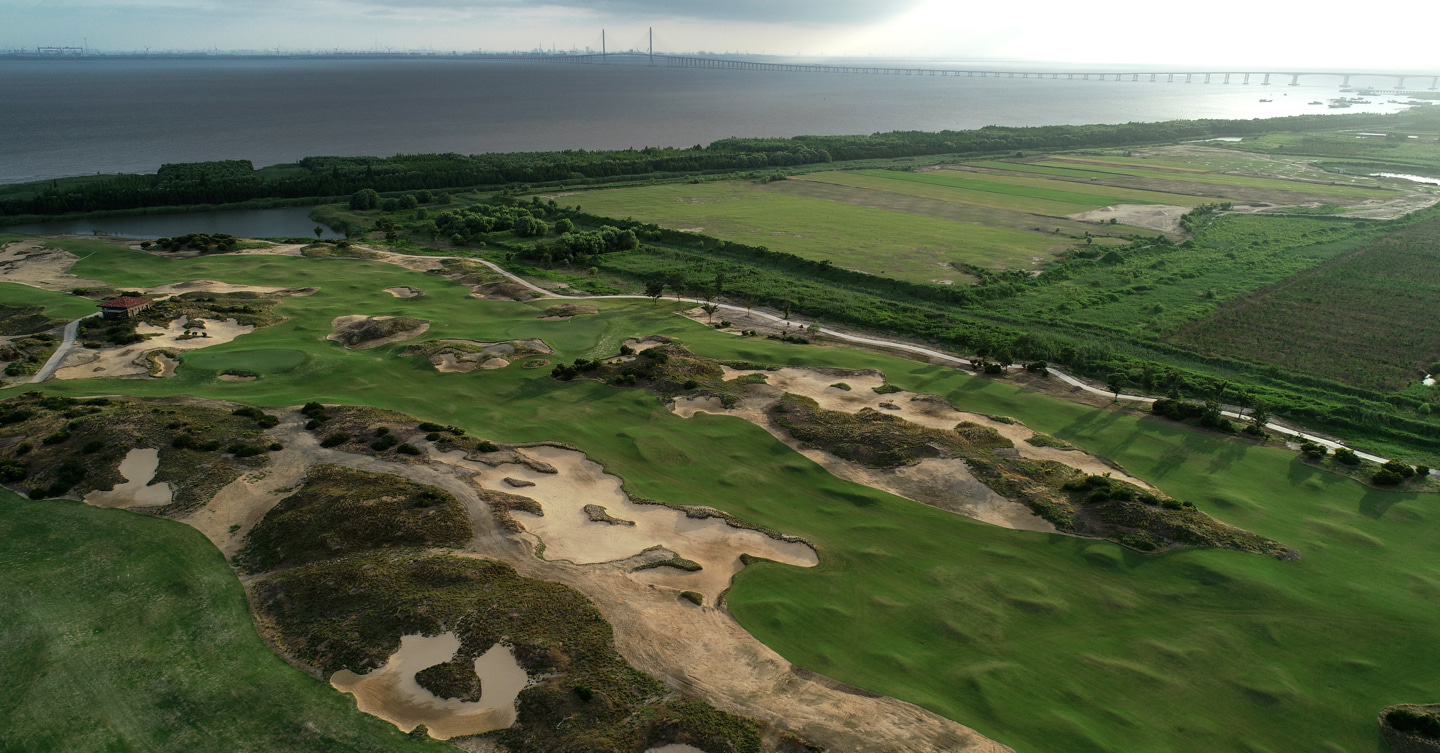
Above the par-4 13th
-
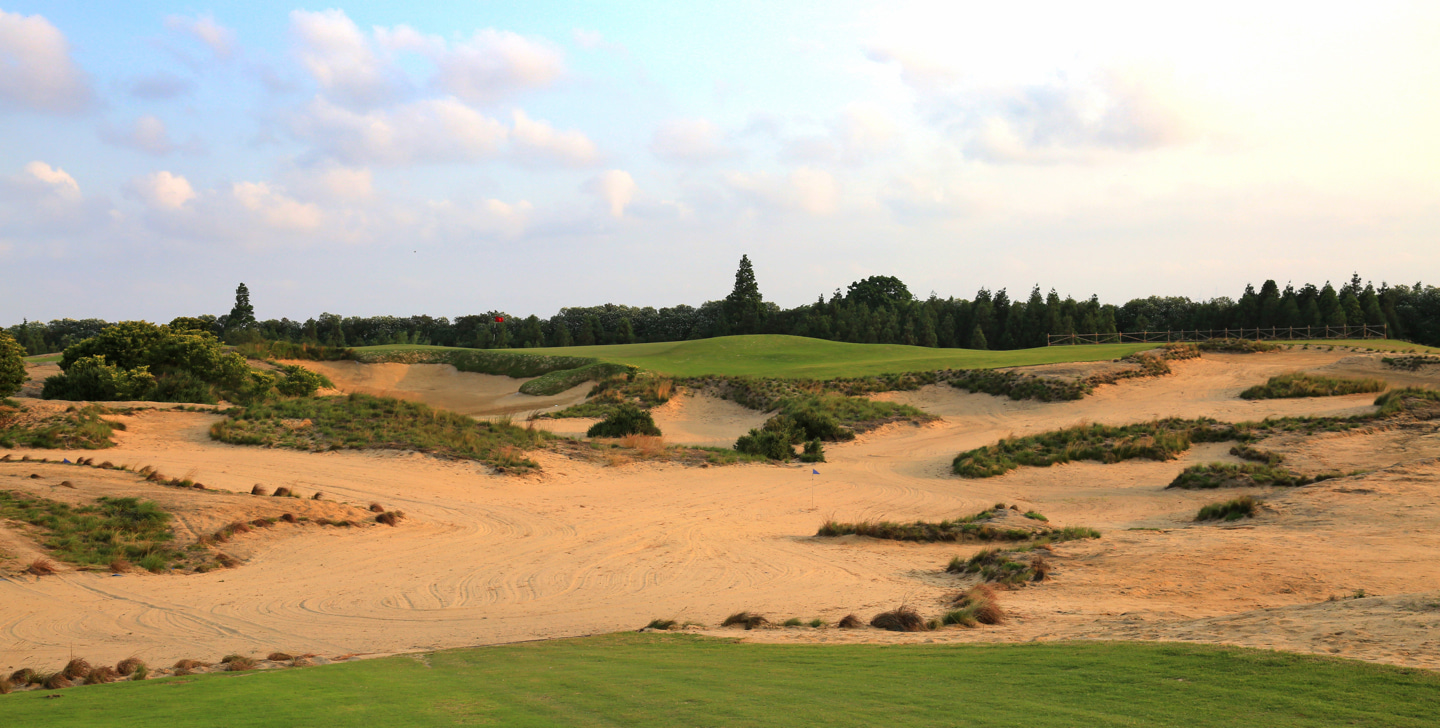
The tee shot on the par-3 14th
-

Approaching the par-4 15th
-
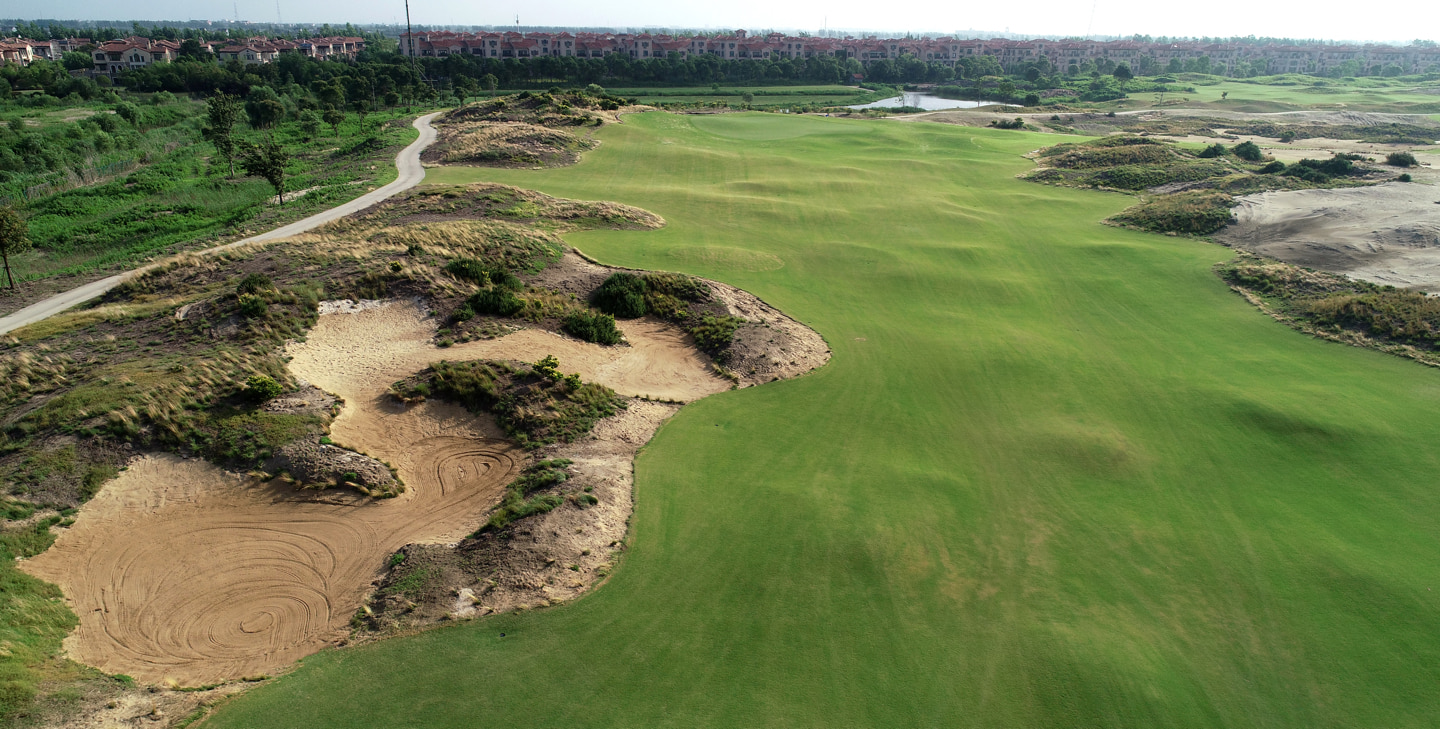
The par-4 16th from above
-

Behind the green on the par-5 17th
-

The fairway bunkers on the par-4 18th
The thoughtful approach taken by OCCM has produced a course the likes of which the Chinese have never experienced. Ashley Mead is optimistic, “It’s dependent on the governments regulations, but if new courses don’t get to be built in China in the coming years, hopefully an opportunity exists to renovate many of the courses that were built at break-neck speed during the boom. We have just broken ground on our next project in China, this time in the capital city of Beijing. More new experiences will be gathered, and applied.”
Infused with strategy, beauty, and the true spirit of the game, while honoring its location, perhaps Yangtze Dunes will become a guide for the future of golf in China rather than another NLE. If so, it’s conceivable that China’s tumultuous relationship with the game reaches a reconciliation that allows for healthy growth in the future. Karl Marx, Fidel Castro and Den Xiaoping all found something to love about hitting the ball. Who knows? Maybe their modern day Communist leadership counterparts will as well.


 by
by 
